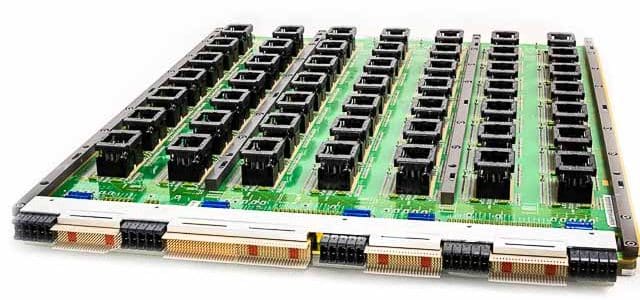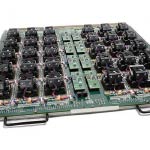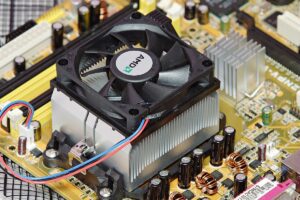
Designing and Building Burn-In Boards for Semiconductors: A Comprehensive Guide
Introduction
Burn-in boards are essential tools in the semiconductor industry for ensuring the reliability and longevity of electronic components. By subjecting devices to accelerated stress conditions, burn-in boards help identify and eliminate potential defects before they cause failures in the field. The design and construction of burn-in boards require careful consideration of various factors, including the specific requirements of the devices being tested, the desired stress conditions, and the overall reliability goals of the manufacturing process.
This comprehensive guide will delve into the key aspects of designing and building burn-in boards for semiconductors. We will cover topics such as board layout, component selection, power delivery, thermal management, and testing procedures. By following the guidelines outlined in this article, engineers and technicians can develop burn-in boards that effectively assess the quality and reliability of their semiconductor products.
Understanding Burn-In Boards

A burn-in board is a specialized printed circuit board (PCB) designed to hold and test semiconductor devices under controlled stress conditions. It typically consists of the following components:
- Sockets: These are used to connect the devices under test (DUTs) to the burn-in board. Sockets must be compatible with the package type and pin configuration of the DUTs.
- Power supplies: These provide the necessary voltage and current to power the DUTs during the burn-in process. Power supplies should be capable of delivering stable and accurate power levels.
- Load resistors: These are used to simulate the load that the DUTs will experience in their intended applications. Load resistors should be carefully selected to match the impedance requirements of the DUTs.
- Temperature sensors: These monitor the temperature of the DUTs and the burn-in board to ensure that the stress conditions are being maintained.
- Control circuitry: This circuitry is responsible for controlling the power supplies, monitoring the temperature sensors, and providing feedback to the operator.
Design Considerations for Burn-In Boards
The design of a burn-in board must be optimized to meet the specific requirements of the DUTs and the desired stress conditions. Here are some key factors to consider:
- Device compatibility: The board must be designed to accommodate the package type, pin configuration, and power requirements of the DUTs.
- Stress conditions: The board should be capable of subjecting the DUTs to the desired stress conditions, such as elevated temperature, high voltage, or high current.
- Thermal management: The board must be designed to effectively dissipate the heat generated by the DUTs during the burn-in process. This can be achieved through the use of heat sinks, fans, or forced air cooling.
- Power delivery: The board must provide clean and reliable power to the DUTs. This requires careful consideration of power supply selection, voltage regulation, and current limiting.
- Signal integrity: The board must ensure that signals are transmitted and received without distortion or noise. This can be achieved through proper layout techniques, impedance matching, and the use of high-quality components.
- Safety: The board must be designed to be safe for both the operator and the DUTs. This includes measures to prevent electrical shock, fire, and other hazards.
Board Layout and Component Placement
The layout of a burn-in board is critical to its performance and reliability. Here are some guidelines for effective board layout:
- Power and ground planes: Use solid copper planes for power and ground to minimize impedance and reduce noise.
- Decoupling capacitors: Place decoupling capacitors close to the power supply pins of the DUTs to filter out high-frequency noise.
- Trace routing: Route traces for high-frequency signals away from power and ground planes to avoid crosstalk.
- Thermal vias: Use thermal vias to connect the top and bottom layers of the board and improve heat dissipation.
- Component placement: Place components that generate heat, such as power resistors and transistors, away from sensitive components.
Component Selection
The selection of components for a burn-in board is crucial to its reliability and performance. Here are some factors to consider:
- Temperature rating: Components must be rated for the maximum operating temperature of the board.
- Power rating: Components must be capable of handling the power levels required by the DUTs.
- Voltage rating: Components must be rated for the maximum voltage that will be applied to them.
- Reliability: Components should be selected based on their reliability track record and suitability for high-stress applications.
Power Delivery
Effective power delivery is essential for the proper functioning of a burn-in board. Here are some key considerations:
- Power supply selection: Choose power supplies that are capable of delivering the required voltage and current levels with good regulation and low noise.
- Voltage regulation: Use voltage regulators to ensure that the voltage supplied to the DUTs is stable and accurate.
- Current limiting: Implement current limiting circuitry to protect the DUTs from excessive current.
- Grounding: Use a solid ground plane to minimize noise and ensure proper grounding of the DUTs.
Thermal Management

Thermal management is critical to the reliability and performance of a burn-in board. Here are some techniques for effective heat dissipation:
- Heat sinks: Use heat sinks to transfer heat from hot components to the surrounding environment.
- Forced air cooling: Use fans to circulate air over the board and improve heat dissipation.
- Liquid cooling: Use liquid cooling systems for high-power applications.
- Thermal vias: Use thermal vias to connect the top and bottom layers of the board and improve heat dissipation.
Testing and Verification
Once a burn-in board has been designed and built, it must be thoroughly tested and verified to ensure its proper functioning. Here are some key testing procedures:
- Electrical testing: Verify the electrical performance of the board, including voltage levels, current flow, and signal integrity.
- Thermal testing: Verify the board’s ability to maintain the desired stress conditions, such as elevated temperature.
- Functional testing: Test the board’s ability to properly power and control the DUTs.
- Safety testing: Verify that the board is safe for both the operator and the DUTs.
Conclusion
Designing and building burn-in boards for semiconductors requires careful consideration of many factors, including device compatibility, stress conditions, thermal management, power delivery, signal integrity, and safety. 1 By following the guidelines outlined in this guide, engineers and technicians can develop burn-in boards that effectively assess the quality and reliability of their semiconductor products.